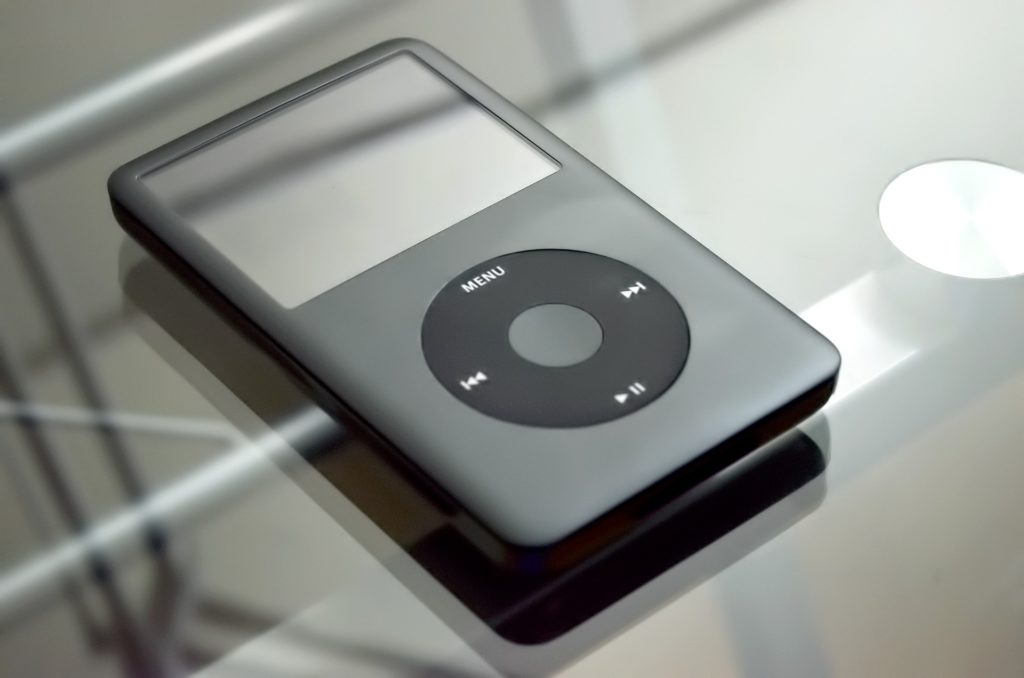This article gives insight into the previously untold story of many businesses that push through defining moments to create their destiny. It should also provide an education of how companies succeed with Electronics Manufacturing in China that isn’t written about in business school textbooks.

Three simultaneous truths existed in 2004.
- One, I was competent in surfing the internet.
- Two, Shenzhen had emerged as the world’s hub for electronics manufacturing.
- Three, I was motivated to explore and take on challenges.
The convergence of these realities leads to a 3-week pilgrimage to Shenzhen to learn about electronics manufacturing in the summer of 2004. Equipped with one backpack half full of worldly possessions and one box of red ink on white background business cards for Happy Toes, the brand of sandals I never started, the journey began.
This story dates back to 2012 when smartphones were still a luxury item, and MP3 players were still relevant. I had started a business called Hatch Manufacturing that helped get Chinese-made digital products into the hands of consumers all over the world.
I first came to China when I was 20 to learn Chinese, achieving survival fluency in 5 months. After returning to university in the US, living with a Chinese roommate allowed me to continue improving.
After running a small export business from Thailand, it was clear that China provided an appealing platform for building an international trade business.
Shenzhen is the world’s hub for electronics manufacturing. After 3 years of highs and lows running my own brand of consumer electronics, I had developed a respect for all the other little guys battling to come up in the industry.
Over those 3 years, it became clear that my unique value was as an American making electronics in China, where I was located, not selling them into retail markets where I was not located.
The first guy to give me a big break
After discontinuing my own brand, I blindly reached out to the owner of another small brand – a previous competitor. The first guy to give me a big break was Bill Howells, CEO at Mach Speed, which sourced MP3 players for placement through major US retail stores.
Like me, he started from zero hustling no-name MP3 players in a world dominated by the iPod, working his way from e-commerce and regional retailers to big box stores like Kmart and Best Buy.
Bill flew his chartered prop plane across the Midwestern US to meet with buyers from all of the big stores, but all the while he was chasing the big blue whale: WalMart.
Getting into WM required convincing big-time buyers that Mach Speed deserved a shot at the majors; that first meant getting the buyers to know that Mach Speed even existed.
To do this, Bill Howells, also the founder of Mach Speed, went to any and every WM vendor event he was invited to, which meant paying a lot of money for access to WM buyers.
He jumped through all the hoops but found himself still looking in from the outside, like a heavy-hearted 19 years old stuck outside a house party he wasn’t invited to, while all his friends were inside meeting girls.
At one of these vendor events, he even bought an ATV buggy for $14,000 in the charity auction just to get the chance to invite the WM buyer to take a ride with him – which the buyer did, unfortunately ending with Bill crashing the buggy into a tree and… nah, I’m just kidding the ride went well.
Developing a strong business relationship
Bill used the opportunity to create a better relationship with the buyer, who was buying low priced MP3 players from a much bigger, publicly traded, supplier that already had a large line of products selling through WM, not only MP3 players.
After another year of continued efforts to befriend and prove credibility to the MP3 buyer at WM, Bill finally earned himself a conditional invite to the party.
He’s invited to test one product at WM for a blockbuster Black Friday promotion and the test order was Bill’s biggest ever to date. It started as a single order for 200,000 units until WM increased the order size to 300,000 units.
If it went well then Mach Speed would become WM’s new low-cost MP3 brand. If not, Bill would need to buy more buggies. Approaching the opportunity with total confidence mixed with a dose of optimistic uncertainty, Bill’s proven style, he had to figure out how to fulfill the order.
Bill is an innovative and sharp salesman/entrepreneur whose success came in part because he made his own rules instead of following industry standards. He tried staying loyal, in an industry which doesn’t prioritize loyalty, to 2 suppliers who could supply the same commodity products.
By balancing between 2 suppliers, he was able to get competitive pricing since both could provide the same product, while also earning loyalty back since they (Hatch being one of them) respected that he wasn’t engaging alternative suppliers.
After 1-2 years of working together, I developed a personal relationship with Bill and many other people in Mach Speed. I was uncommon: outgoing, honest, hard-working, and willing to take risks.
We first ‘met’ when I was 26 years old on a phone call. Experience taught me to have zero expectations of any conversation with anyone in the electronics industry.
By that time I had started (and stopped) a brand of white label MP3 players and other digital electronics, introduced over 30 various consumer electronic products into the retail market, was preyed on by the scum of the industry, heard more empty promises than a politician’s wife, built companies in both the US and China, and still had a lot to learn about the industry at large.
Fortunately, I was always ready to learn (quickly). When I first met Bill, I was a fresh-faced and hungry, young American entrepreneur, based out of Shenzhen, eager to prove myself and had little to fear or lose.
We meshed organically. Even if we didn’t end up working together we would have been friends anyway.
Manufacturing 300k MP3 players

Although we could both produce the same thing, Hatch and the other supplier usually specialized in different models, with 1 or 2 popular ones that we both supplied. When the WM deal was getting close to becoming a reality, I happened to be making my annual summer visit to see Bill in Oklahoma.
On a beautiful sunny afternoon at his lake house, he took a call from his talented head of sales, Layla, who just received positive news about getting this order. While on the phone he asked if I could do this model. I couldn’t see why not. Bill was aware that his other supplier had always produced this model previously.
I’d like to think it was because of Hatch’s reputation for quality that Bill decided to bet on Hatch to fulfill his career-long dream of selling to Walmart. I felt pride to receive this question, not that I actually believed we’d get the order.
We ended up with 45 days to produce 300k units
Fast forward a few weeks when I’m back in China. We ended up with 45 days to produce 300k units. This would usually be OK as we had the resources to make 20-25k per day, but it was necessary to manufacture a new case for this product from scratch due to functionality and sourcing restraints with the existing case supplier meaning that assembly couldn’t start until the case was ready.
The tooling for the case mold typically takes 30 days to make (45 days for Android Tablets and Android Smartphones tooling) once the design is confirmed, plus the time to actually produce the 300k cases.
Our hard-working and dedicated case supplier committed to getting this done in 23 days instead of 30. We started reviewing the BOM (list of components in a product) of the PCBA (the piece of electronics inside casing, like a motherboard of a PC), looking at each component on the standard PCBA and confirming which were actually needed because this product wouldn’t use the functions that some components were intended for. No reason to pay for unnecessary components.
We planned to have about 20 days for assembly, quality control, and packing. Of course, we also planned on unforeseen delays, which became more obvious every day, as case output was lower than expected, battery production had delays, screens never showed up when they should, etc. So we ended up with about 10 days to assemble, conduct Quality Control and pack 300k units.
How we avoided $250,000 of the additional cost
If we missed the 45-day deadline, the goods would have to be shipped by air and not by sea, adding about $250,000 of the cost that no one wanted to pay for.
To help avoid this, Hatch arranged assembly at 5 different assembly plants. Two were our main assembly partners and 3 were smaller facilities which helped pick up the slack. Hatch had all hands on deck for this order, constantly visiting supply chain partners to prevent or resolve delays in components like cases and batteries, coordinate assembly, and oversee each step of the process.
As the MP3 players started coming off the production line, Hatch’s QC team found problems with an unusually high percentage of units. Those units were rejected, the good ones went into retail packaging, and containers of goods started going out.
At the same time, we had our engineering team review the rejected units to figure out why there was such a high percentage of failure. Goods kept shipping out from all 5 factories. The end was now in sight, although the feeling of relief never really got to settle in…
Click on the link for the second half of our story.
Yours truly, Ben Dolgin-Gardner, Hatch founder and Manufacturing Solution Expert


